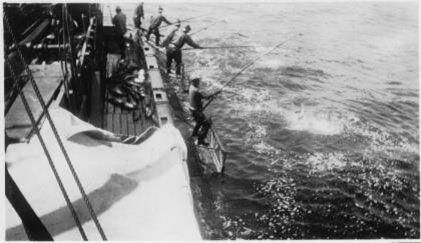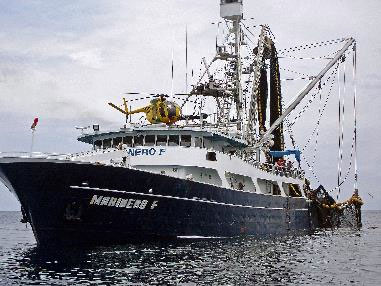Learning from the Past – A Brief History of the Tuna Industry
Developing a sustainable pole & line fishery in Costa Rica
The early years of California’s
tuna fishery
 In 1874 the first tuna fishermen were Portuguese whalers who settled along the US West Coast. They continued to whale from shore, but also trolled for albacore tuna and sold the cured fish to other Portuguese and to the Italians and Chinese.
In 1874 the first tuna fishermen were Portuguese whalers who settled along the US West Coast. They continued to whale from shore, but also trolled for albacore tuna and sold the cured fish to other Portuguese and to the Italians and Chinese.
In 1903 the first cannery started processing albacore and during World War I, the market boomed, with increased need for low-cost protein sources.
Tuna was an ideal source, and by 1920 canners in California could deliver a case of tuna to New York for less than a dollar.
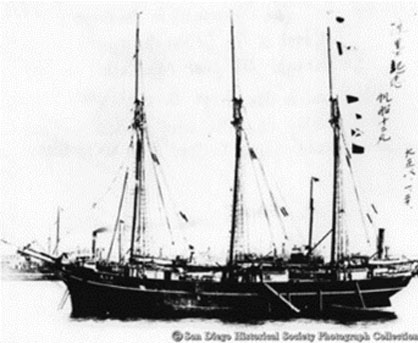 The Japanese influence
The Japanese influence
In 1920 70 Japanese fishermen were brought to California where they introduced pole & line fishing for tuna
In 1924 the first refrigerated ships where brought to San Diego by the Japanese who helped build the canneries, develop processing methods, and improve fishing techniques.
The Japanese contined to play a central role in the San Diego tuna fishery until World War II, when the government took over their boats for coastal patrol vessels.
Bait boats were mostly used until the late 1950s, when fishing vessels switched from hook-and-line fishing to mechanized purse seining.
The ‘Golden Years’ of the Eastern Tropical Pacific Pole & Line fishery (1924 – 58)
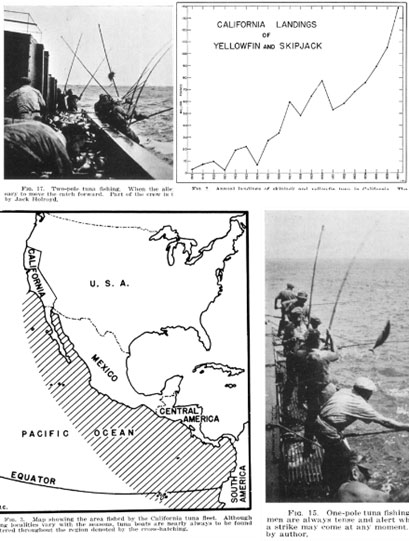
Catches stored on ice, delivered to canneries in California
Fleet of 70 boats; <90ft “smaller tuna boats”
and about 50 >90ft “larger tuna boats“
Trip length: 7-8 weeks
Distance of travel: 6 – 8,000 miles
Fish hold capacity: 150 to 350 t
No. of crew: 12 to 20
Operating out of San Diego
Target spp: yellowfin (primary) and skipjack (secondary)
Fishing grounds: Eastern Pacific from
southern California to the equator, covering a
belt from the American mainland to about 800
miles offshore.
Recent History of the tuna fishery in Costa Rica
In Costa Rica livebait was caught in the Gulf of Nicoya and to a lesser extent in the Gulf of Fonseca, 300 miles northwest of Puntarenas
- The “mosquito fleet” – a power boat towing two skiffs – allowed for bait fishing in shallow waters
- Catch was mainly yellowfin, but skipjack also targeted
- A study1 in 2017 showed the commercial value of tuna to be some $62 million per year. Of this total, Costa Rica receives only $904,000 in licensing fees.
- Estimated that the country received some $19 for each metric ton of tuna, which can reach a market price of some $2,000.
- INCOPESCA estimated total catch of tuna to be 25,000 metric tons per year, taken by 44 purse seiners, with only 36% of the catch landed at local ports.
- The study urged the government to amend fishing laws in order to boost income for the country.\
- Also recommend improved training for artisanal tuna fishers and the drafting of measures to promote tuna processing at local plants.
- In 2014 a Tuna Decree was signed, prohibiting tuna purse sein operations within 45 miles of the coastline of Costa Rica. Other important areas and sea mounts were also protected effectively prohibiting tuna netting operations in over 200,000 square kilometers of territorial water.
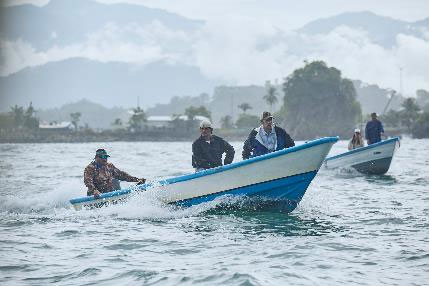
Socio-Economic Impact in the Fisheries Sector
The importance of the fishing sector:
- INCOPESCA data: 400 fishing boats, crews of 5-8 people; 2,000 – 3,200 fishers directly linked to the sector.
- Fishers and the families that depend on them – thousands people, excluding those indirectly linked through the thousands of other jobs which ensure fishing activity such as transportation, fishing supplies, food, mechanics, and others.
The benefits of getting more Costa Rican fishers involved in the tuna sector are clear.
- Improved living conditions for coastal families
- Reduce pressure on popular species like sharks and billfish.
- Enhance opportunities for the sport-fishing sector – a huge economic contributor to the national budget.
- National Pride / Enhanced reputation: Costa Rica has already gained international praise for its terrestrial conservation efforts. Addressing marine conservation issues by addressing IUU fishing and rectifying commercial fishing inequalities would contribute greatly.
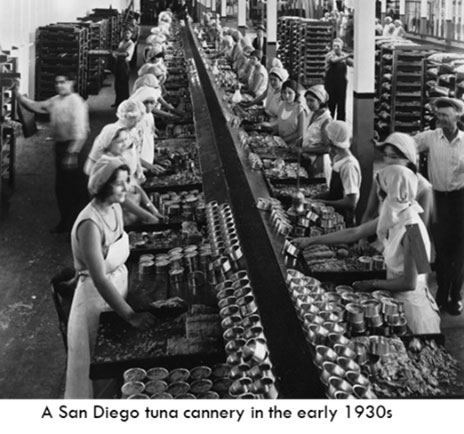 Let us go Back to the Future
Let us go Back to the Future
Catching tuna more sustainably in Costa Rican waters
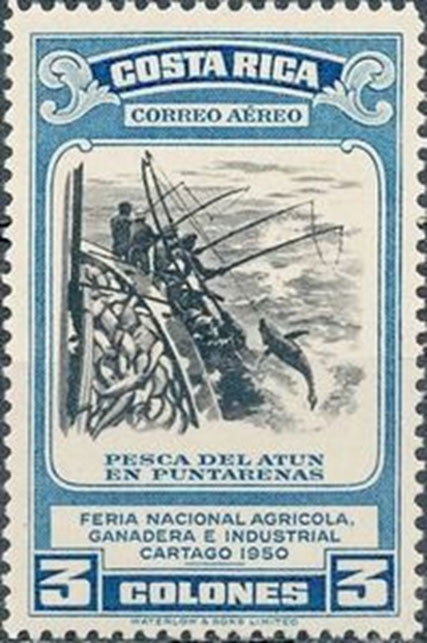
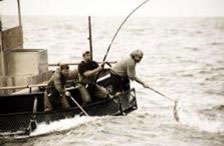 A Pilot Project – Testing the feasibility of Pole & Line Tuna fishing in Costa Rican waters
A Pilot Project – Testing the feasibility of Pole & Line Tuna fishing in Costa Rican waters
- There is already strong demand for pole & line yellowfin in the can & jar export markets
- Currently yellowfin is imported from the Maldives and processed in Costa Rica to satisfy this demand.
- It would make much more sense to catch this fish locally instead, creating employment opportunities and retaining value in the country.
- The Costa Rican government is keen to support an initiative that could lead to more sustainable tuna fisheries and help to create jobs in coastal communities that are struggling with high levels of unemployment.
- Since the closure of the shrimp trawl fishery 800 fishers have been unemployed and some of them can be trained to do pole & line fishing for tuna.
The Proposal
- Crew on US-flagged pole & line vessels will transfer technical skills to local fishermen in Costa Rica, with the longer term objective of helping to establish a local one-by-one fishery.
- Initially, two pole & line vessels from the American Albacore Fishing Association (AAFA), an IPNLF member, will sail from their base in San Diego to Costa Rica early next year to do some trial fishing in the Costa Rica EEZ.
- The necessary permits are currently under application with the Costa Rican government.
- Trial fishing will commence as soon as the permits have been issued and will continue until May 2020.
- Daniel Carrasco, the new President of INCOPESCA, the body that governs all fisheries in the country, made it clear that he sees his key focus area to be “responsible and sustainable fishing as a source of food, employment generation and economic benefits in coastal communities nationwide”. The project is therefore aligned with INCOPESCA’s objectives.
The Proposal (continued)
- The plan is for 4-6 fishers from Costa Rica to be trained in pole & line fishing techniques while on board the two US-flagged AAFA vessels. Each of these vessels will have 3 US crewmembers on board – a skipper, an engineer and a fisher/trainer as well as the Costa Rican fishers.
- Such fisher exchanges have already been implemented successfully between AAFA vessels and pole & line fishers from the Maldives, with IPNLF providing a support function for those efforts.
- The Instituto Nacional de Aprenizaje (INA), Costa Rica’s technical institute, have agreed to provide 3 biologists /observers – 2 of them will be boat-based and 1 shored-based to monitor the landing of catches. INA are fully supportive of the approach of training the Costa Rican fishermen once the two pole & line boats arrive in Costa Rica.
- Based on an agreement with the government, which will be contained in the experimental licences, the catches will go on to an open auction in Costa Rica, probably controlled by INA.
- The value of the catch sale will go towards recovering the costs of the project, which includes: the trip from San Diego to CR, salaries, fuel, food, repairs & maintenance, all fishing expenses and the trip back to San Diego from CR.
- If funds are left over after covering all expenses, project partners plan to contribute these towards a fund designed to further develop the pole & line fishery in CR.
- Alimentos Prosalud, World Wise Foods and American Tuna, all IPNLF members, will provide the initial funding for the project, but are keen to look for additional sources of funding, particularly if it could be done under a Public Private Partnership. It is estimated that the total budget for the project will be around US$ 600,000.
- If this initial phase proves successful, the plan would be to further expand on the training of fishermen and to bring additional pole & line vessels to fish in the Costa Rican EEZ in future seasons.
Alignment with other initiatives
- The proposed project is aligned with the Costa Rica Sustainable Fisheries Development Project (P168475), a $90 million World Bank project that looks like it might be approved early in 2020. This project is focused on strengthening the governance and management of fisheries, investing in sustainable fisheries value chains and strengthening mechanisms for social and environmental sustainability.
- FAO have expressed an interest in potentially providing some co-financing.
Next Steps
- Year 1 of the project is focused on US-flagged vessels harvesting tuna with Costa Rican crew on an experimental license.
- If Year 1 shows promising results, Year 2 will expand on the number of US-flagged vessels involved in the experimental fishery. The target would be to increase the number of vessels from 2 to 4. This would also create additional skills development and employment opportunities for Costa Rican fishers.
- Alongside this, Year 2 will also have to focus on policy work. Preferably this can happen with outside donor support by linking to some of the existing or planned projects that focus on sustainable fisheries. The policy work would focus on two key areas:
- 1.A legal framework for the effective management of a pole & line fishery
- 2.The creation of a ‘business friendly’ enabling environment for a pole & line fishery and the processors and exporters associated with.
- By Year 3 it is hoped that a greater level of local ownership and investment will lead to the establishment of a Costa Rican pole & line fishery
Long Term Goals
1. Ensure that tuna in the Costa Rica EEZ is harvested sustainably by re-introducing fishing gears that have low environmental impacts
2. Create employment opportunities in coastal communities by training local fishers to catch tuna by pole & line
3. Ensure longer-term sustainability of tuna and billfish resources in Costa Rican waters
4. Inspire neighbouring countries such as Panama and Ecuador to also re-introduce pole & line tuna fisheries
5. Tell the story so that consumers can understand the impact their choices can have on the environment and the people connected to these fishery
1. Ensure that tuna in the Costa Rica EEZ is harvested sustainably by re-introducing fishing gears that have low environmental impacts
2. Create employment opportunities in coastal communities by training local fishers to catch tuna by pole & line
3. Ensure longer-term sustainability of tuna and billfish resources in Costa Rican waters
4. Inspire neighbouring countries such as Panama and Ecuador to also re-introduce pole & line tuna fisheries
5. Tell the story so that consumers can understand the impact their choices can have on the environment and the people connected to these fishery
Get up to speed quickly on our fight against illegal fishing in Costa Rica
More Articles About Supporting Sustainable Tuna Fisheries in Costa Rica
Stop Illegal Fishing in Costa Rica
Explaining The Costa Rica Tuna Decree
Yellowfin Tuna – Costa Rica’s Blood Diamond
Tuna Methods Cause Conflict, Create Bycatch and Kill Dolphins
Fate of Bigeye Tuna in Costa Rica in the Balance
Costa Rica’s Tuna Decree Seems to be Working
Costa Rica Fisherman Want Access to Local Tuna
Costa Rica’s Tuna Decree is Saving Billfish and Dolphins
Costa Rica Fish Species: Yellowfin Tuna

